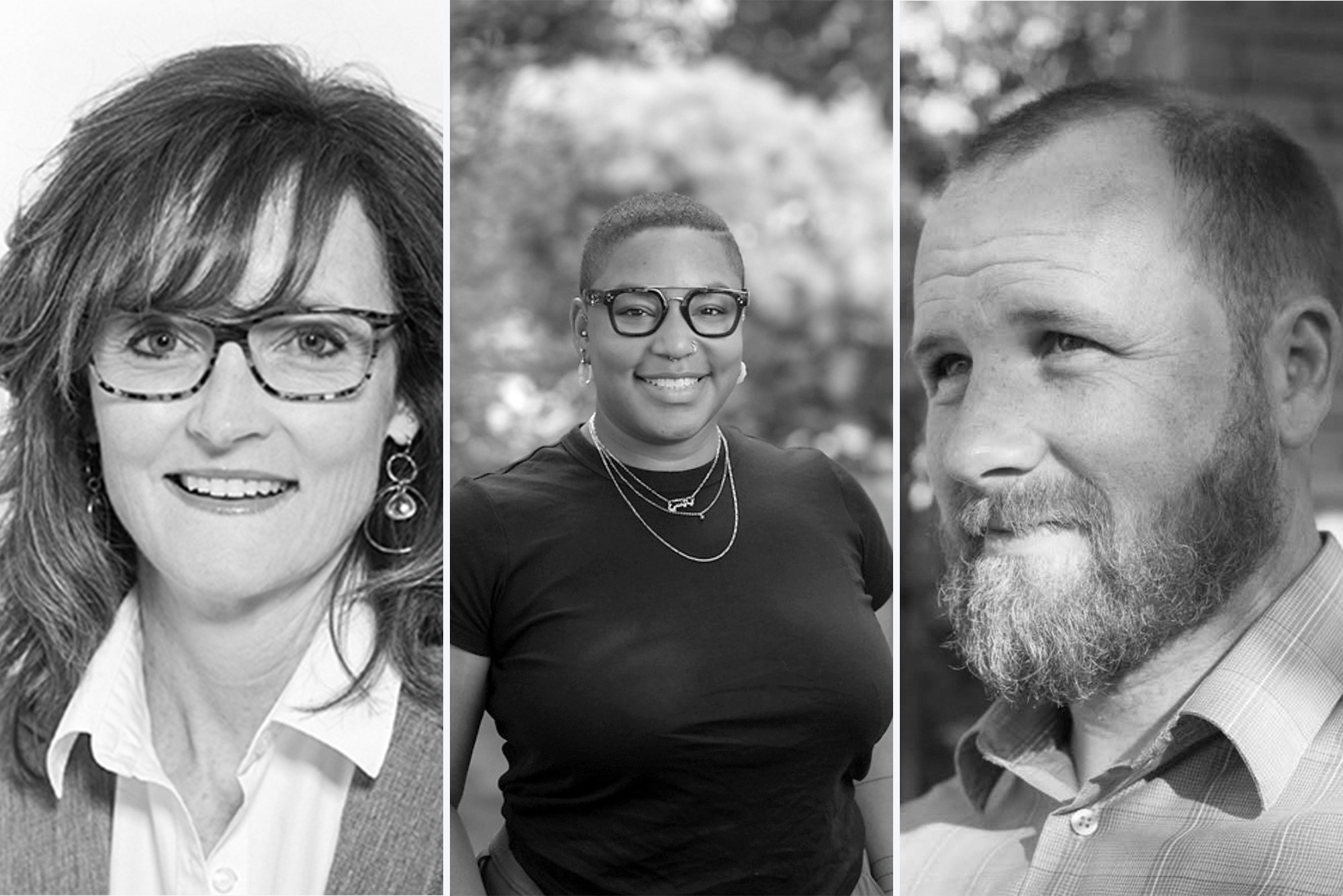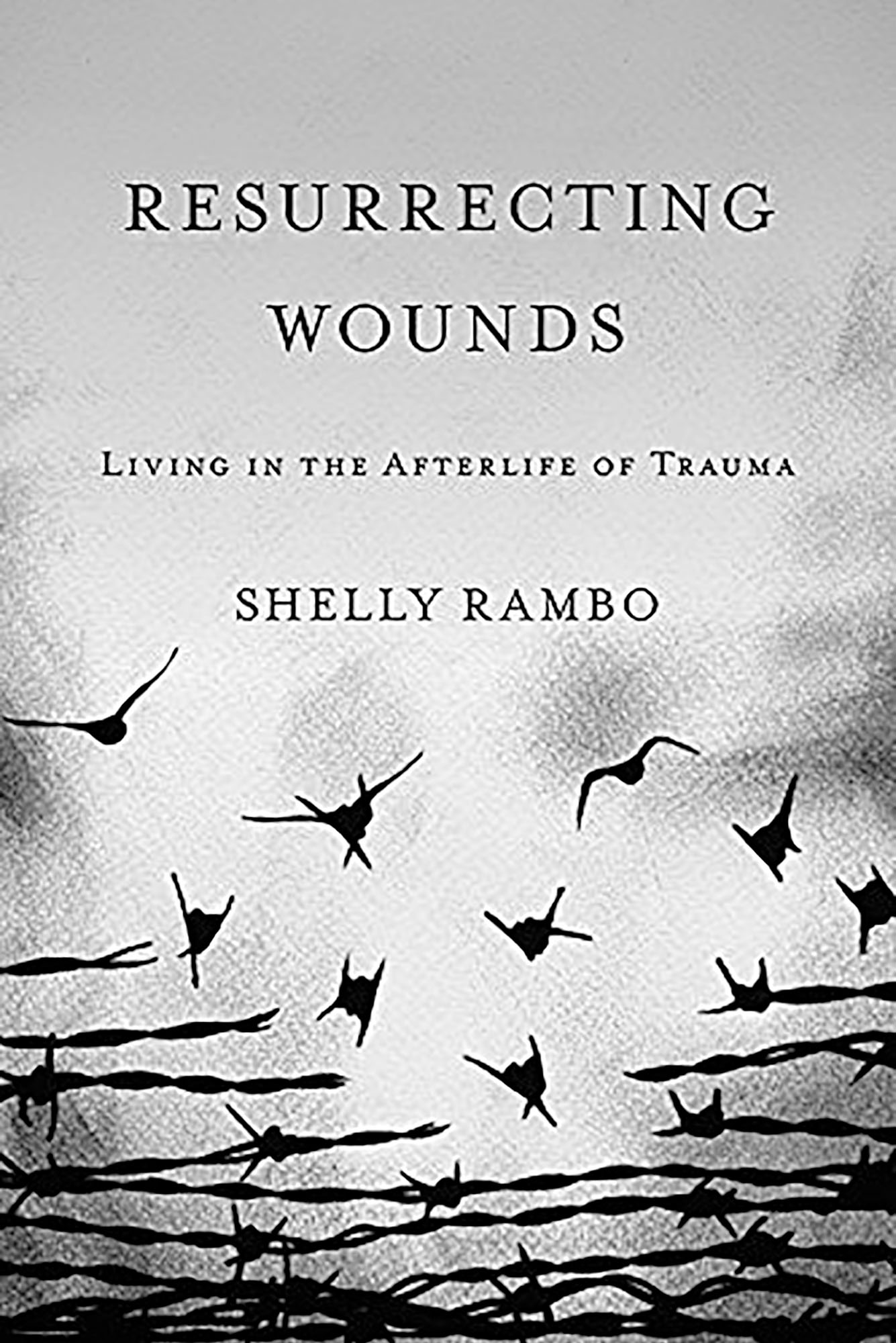First Responders: STH Launches New Program
Trauma-Responsive Congregations Program helps churches expand their spiritual care capacity

Shelly Rambo, Ylisse Bess (STH’17), and Chris Nafis. Right and center photos courtesy of the School of Theology; left photo courtesy of Chris Nafis
First Responders: STH Launches New Program
Trauma-Responsive Congregations Program helps churches expand their spiritual care capacity
About half of the members of Living Water Church of the Nazarene in downtown San Diego have experienced some form of homelessness. And, says Pastor Chris Nafis, “almost everybody that’s been on the streets has experienced some form of trauma.” But with a small staff, limited funds, and no specific training, the church didn’t have much to offer those people. “You don’t want to do trauma work badly because you can open up a lot of hurt,” he says.
Nafis likes to read books with his colleagues at Living Water and about five years ago—not long after their church opened—they read Resurrecting Wounds: Living in the Afterlife of Trauma by Shelly Rambo, an STH associate professor of theology. Nafis had the idea of creating healing circles to help members of their community who were dealing with trauma, and he thought Rambo’s book might help. He emailed her, and the two traded messages, but without the resources to train his staff, Nafis couldn’t make any progress on his plan.
Meeting a congregational need
Rambo teaches a course on trauma and theology and, she says, it’s always overbooked. “When people are coming to seminary, they are recognizing that this is something they’re going to need,” she says. “But then I’m seeing this gap when people are out in ministry—they’re struggling.” She wanted to help urban church leaders address the trauma created by crises like food and housing insecurity, displacement, and street violence.
Rambo’s academic background in the intersection of religion and trauma, and a related focus on the work of chaplains—she contributed to the design of STH’s chaplaincy MDiv program—helped to shape her vision for Trauma-Responsive Congregations. Recalling Nafis’ email five years earlier, she says, “He had a vision.” He simply had no way to execute it.
And she knew he wasn’t alone among congregational leaders. “They are just overwhelmed. They’re working all the time,” she says. Her hope, in applying for funding, was to provide leaders like Nafis with a helping hand.
In November 2020, the Lilly Endowment funded Rambo’s proposal for Trauma-Responsive Congregations—which is being conducted in partnership with the Chaplaincy Innovation Lab and ACPE, a professional development organization focused on spiritual care professionals—with a four-year, nearly $1 million grant.
Inspired by chaplains
As Rambo set out to launch Trauma-Responsive Congregations in 2020 and early 2021, she considered what she’d been learning from chaplains. Working in hospitals, prisons, and the military, chaplains are often “first responders to trauma,” she says. “I wanted to translate some of their insights into thinking about congregational leaders.”
One way she did that was by recruiting a staff of people with chaplaincy experience, starting with Ylisse Bess (STH’17). A former chaplain at Beth Israel Deaconess Medical Center, Bess is the Trauma-Responsive Congregations program director.
“Chaplaincy is accompanying people, being with people, listening, and then supporting people by noting their own strengths and inner resources,” Bess says. And that’s the approach that she and Rambo have emphasized. In phase two of the grant, project advisers—many of them with chaplaincy backgrounds—have been paired with congregations to accompany them through a specific project.
Living Water, along with four other congregations, in Massachusetts and San Diego, participated in phase one, which spanned 2022. Each church set out to address trauma in their own way. Nafis and his team used their grant to train church leadership to lead small group sessions. Two churches focused on creating safer spaces for the LGBTQ+ community, another worked to support young people exposed to gun violence.
“We’re not here to swoop in and save anybody,” Bess says. “We’re here to learn from our communities, and where there are opportunities to support, connect, collaborate, and provide education, we will do that.”
[The program] gave us a kick in the butt. The program gave us funding and gave us direction and advice. It put people [who could help] directly in our path.
The success of individual projects won’t be the grant’s only legacy: Rambo plans to write about their results. She’s also overseeing the development of online training modules that could be used in classrooms and to help other congregations deal with trauma.
Because the program was split into two phases, a new group of congregations is benefiting from the experience of those in phase one. One lesson the first group learned was that congregational leaders would benefit from more trauma education from mental health experts, Rambo says. So monthly learning sessions are now available to phase two congregations, helping them develop specific skills for responding to trauma.
Phase two launched in November 2022 with seven new congregations plus Living Water. Among the phase two participants, Calvary Baptist Church in Lowell, Mass., wants to develop resources to support young first- and second-generation immigrants; Harbor Online, a virtual community, wants to help church leaders practice self-care so they’re better able to serve their online congregation; and St. Luke’s North Park in San Diego hopes to enhance their assistance of former refugees from South Sudan and the Democratic Republic of Congo. Others are working to support people facing food and housing insecurity, and substance abuse.
Early results

Although Trauma-Responsive Congregations wasn’t inspired by the pandemic, Rambo says the timing was fortuitous. “What happened in 2020, with the mixture of the pandemic and racialized violence—there was what I call a diminishment of our moral horizon, of our sense of goodness toward other people,” she says. That confluence of events, she adds, created layers of trauma for many people.
For Living Water, the invitation to participate was just the push they needed to realize a long-imagined goal. The church might have been able to “stumble through” the process of creating healing circles on its own, Nafis says, but Trauma-Responsive Congregations made it much easier. “It gave us a kick in the butt,” he says. “The program gave us funding and gave us direction and advice. It put people [who could help] directly in our path.”
Two of those people were expressive arts therapists Sook Kyoung Kwon and Jamie Harris Rosen. The grant allowed the church to hire them to help develop a curriculum and train staff to lead trauma healing groups in the future. The curriculum includes discussions about connectedness, forgiveness, and grief, as well as group activities and art projects.
Rambo was so impressed with their work that she added Kyoung Kwon and Harris Rosen to her advisory team for the second phase of the grant.
“When we first imagined it, I was thinking we would process people’s trauma with them—finding camaraderie in that and telling stories,” Nafis says. But, he learned, “It’s not really helpful with trauma to resurface those things.” Instead, the staff at Living Water discovered that they were already doing a number of things that are helpful for people with trauma, including singing, chanting, and praying. With the help of the expressive arts therapists, “we’ve been learning how to do that with a little more intentionality toward people who have experienced trauma,” Nafis says.
Having trained group leaders in phase one of the program, Living Water has launched the first of its healing circles during phase two. They’ll meet for 12 weeks, after which Nafis and his team will see what’s working and what isn’t, then launch another round. “I think Living Water is developing a trauma responsive model that can go national,” Rambo says.
Nafis is eager to share what he has learned with other congregations, but it’s the impact in his own community that he’s most excited about. “The results will hopefully be that a lot of our people who just struggle in life—they’ll be a little more confident and a little more at peace,” Nafis says. “They’ll walk through the world with a little more sense of belonging.”

Comments & Discussion
Boston University moderates comments to facilitate an informed, substantive, civil conversation. Abusive, profane, self-promotional, misleading, incoherent or off-topic comments will be rejected. Moderators are staffed during regular business hours (EST) and can only accept comments written in English. Statistics or facts must include a citation or a link to the citation.